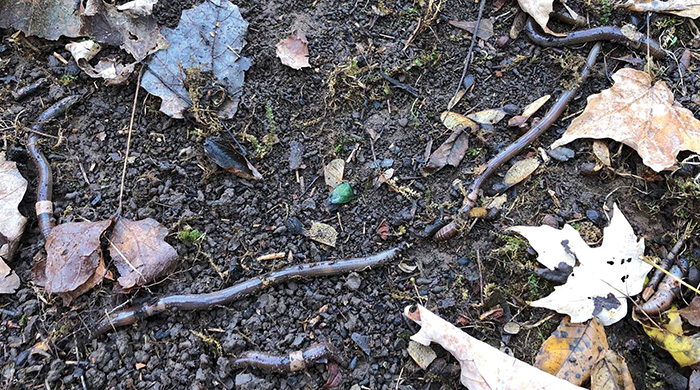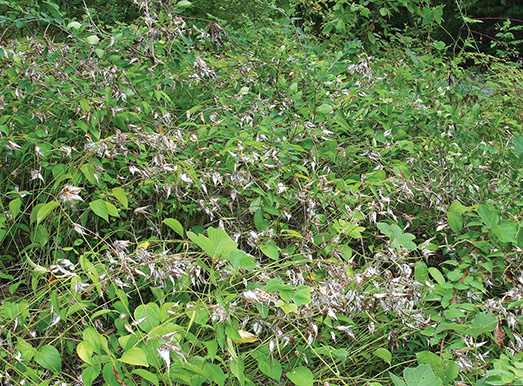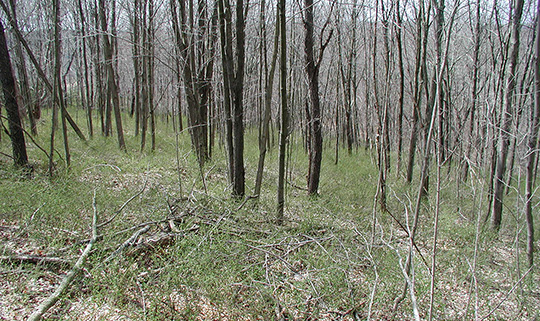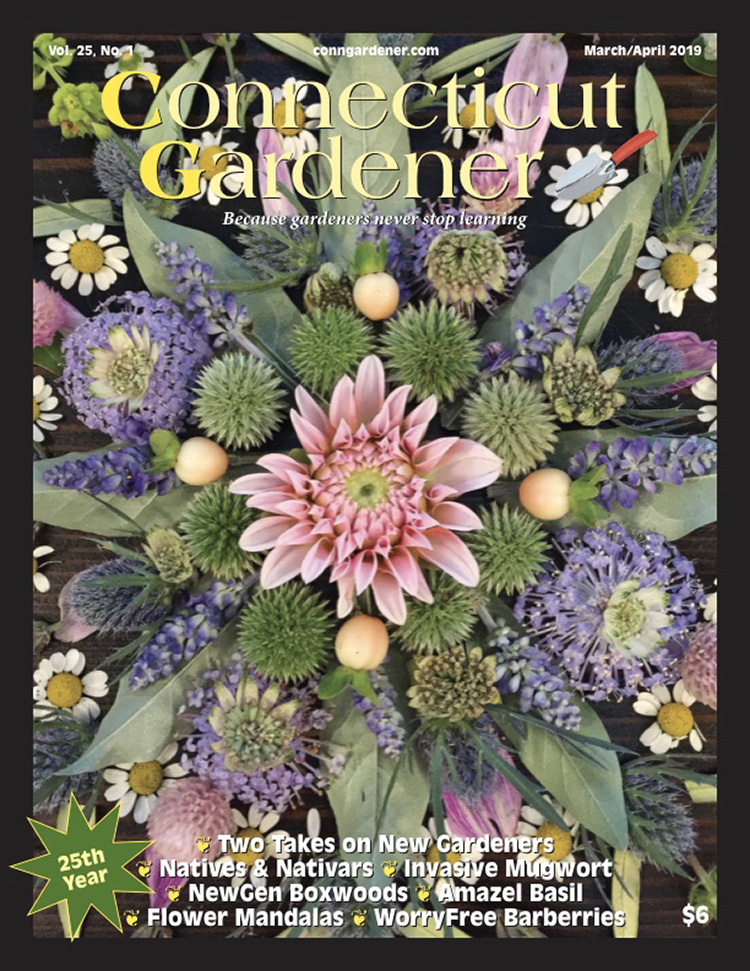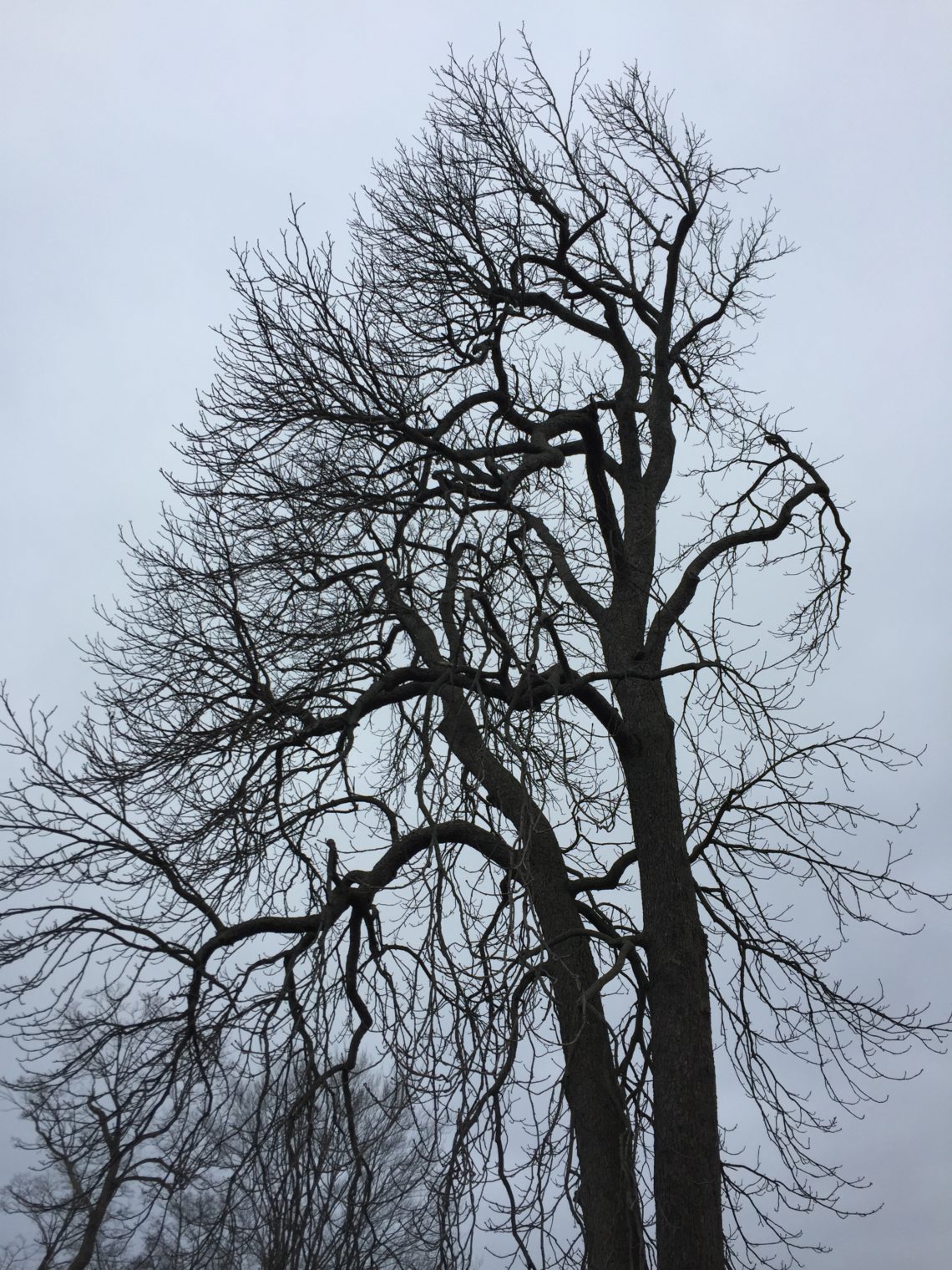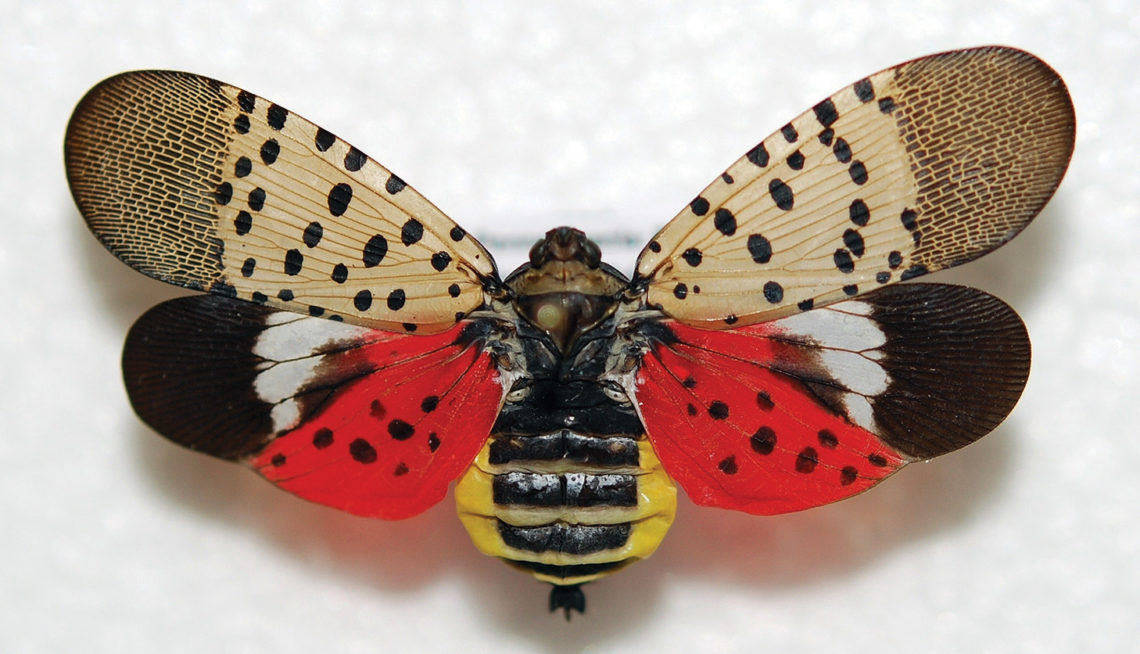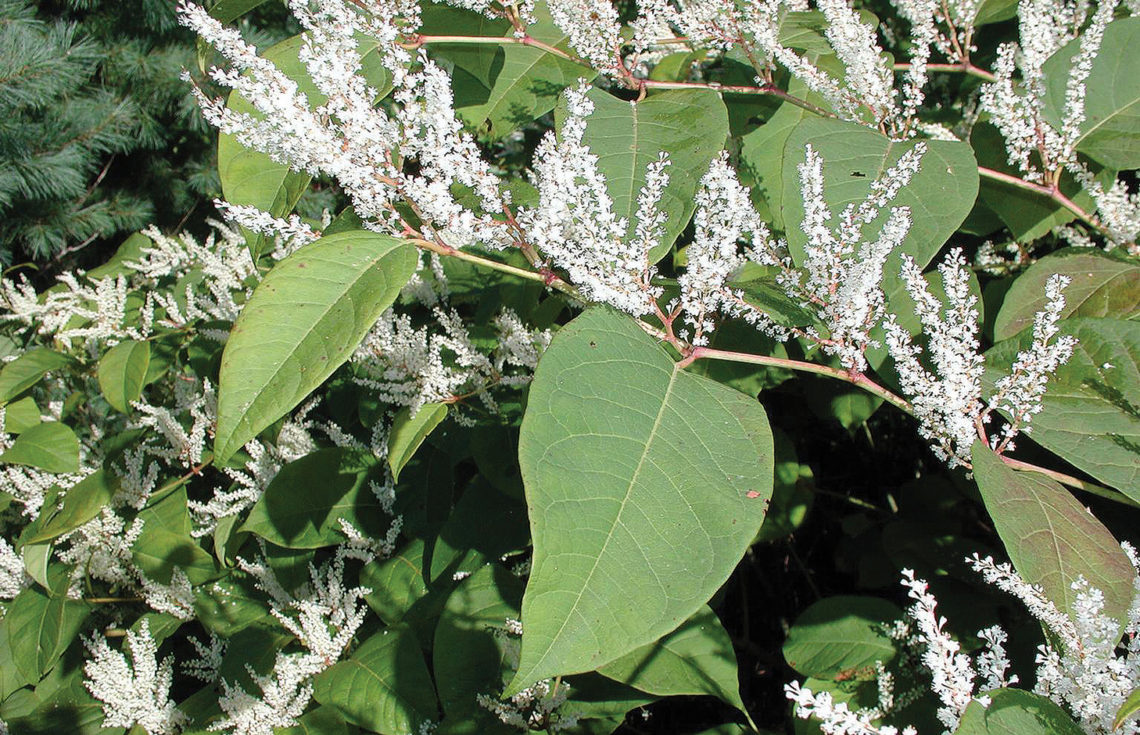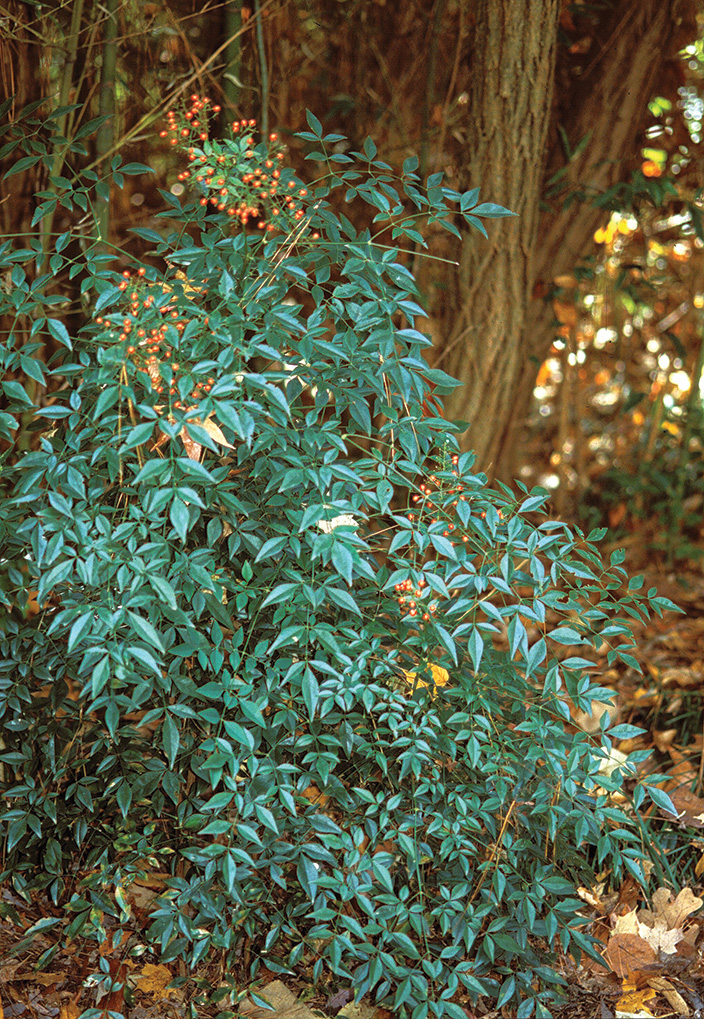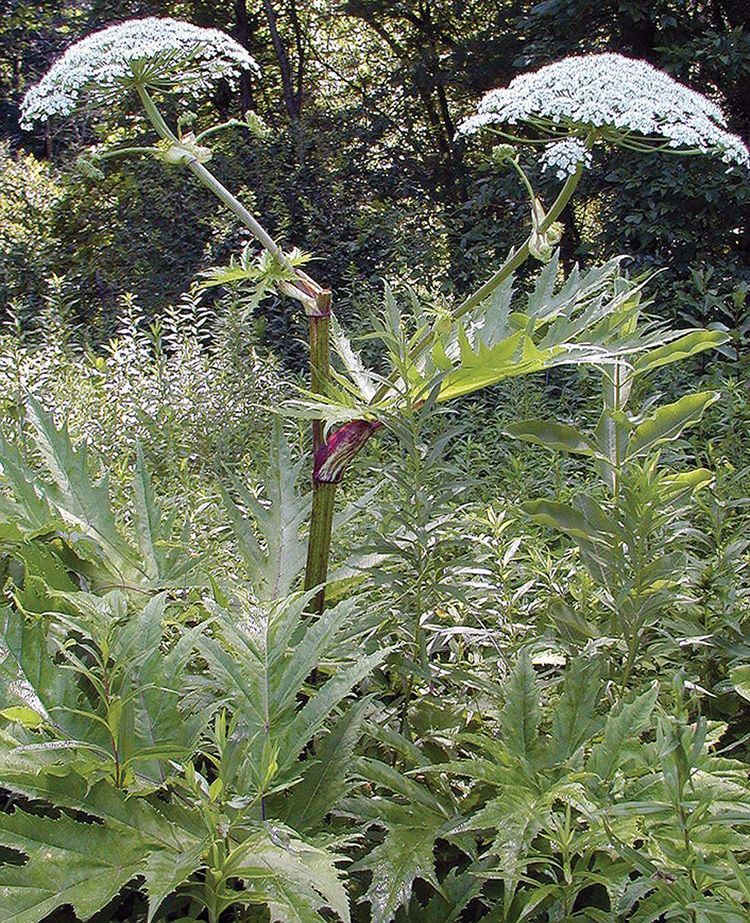We list only mechanical control options below. Many thanks to Emmett Varricchio for developing the calendar. See it in full on the CIPWG website at cipwg.uconn.edu under 2018 Symposium Presentations. If you don’t get to it at the prescribed time, just remember that the best time to manage invasives is NOW! CUT/MOW: Delays/prevents seed production and depletes plant’s resources. Follow-up often as necessary. Repeated mowing is an effective control strategy for some plant species. PULL/DIG: Effective at removing seedlings and annuals. Organize volunteers and have a pulling party. Japanese Knotweed (Polygonum cuspidatum)Cut/mow mid-May to mid-June: Schedule three to four times a year. Can be effective, but don’t leave cuttings to…
-
-
Jumping Worm Update
By Annise Dobson Many of us have grown up thinking that earthworms are a sign of healthy, fertile soil. Recently, a bigger, faster, and incredibly abundant earthworm has been showing up in Connecticut farms, gardens, and forests. Earthworms can be beneficial in their native ecosystems and agricultural settings, but their ability to re-engineer soil can completely restructure ecosystems and the microbial, plant, arthropod and vertebrate communities that live within them. Native Earthworms in Connecticut While its true that most earthworms you will encounter are non-native,we have a small number of native earthworm species in Connecticut. Thelast glaciation is thought to have pushed earthworms out of Connecticut, but Dr. Tim McCay…
-
Black Swallow-wort – Monarch Menace
By Will Rowlands Black swallow-wort (Cynanchum nigrum) is an herbaceous, climbing, perennial vine that can grow up to 6 feet in length/height. It can climb by twining or ramble on the ground. It’s native to the Mediterranean coasts of France, Italy, Portugal and Spain and is considered invasive in Connecticut. It was reportedly cultivated in greenhouses in Ipswich, Mass. and the Harvard Botanical Garden where it escaped into the wild. Its botanical synonyms are Cynanchum louisae and Vincetoxicum nigrum. Common names include Louise’s swallowwort, climbing milkweed and black dog-strangling vine. This plant will take over meadows, pasture, old fields and quarries, hedgerows, vacant lots, roadsides, river banks, transportation and utility…
-
Tick Nurseries Editorial
To help those of who are seeking more answers about why barberry is considered invasive and a tick nursery — here’s a pdf and text of the editorial Will did back in 2015 (pre-digital CG). We hope it helps! It’s a very big subject, when you get down to it, and in our opinion, the more aware people are of their landscapes and the plants in them and their relation to the ecosystem, the better we are able to choose plants that are beneficial and non-invasive. And, as you will read, it’s wise to be aware of the environments where tickborne diseases can hide, and eliminate them if they exist…
-
Our March/April 2019 issue
Our March/April 2019 edition is at the printer. It’s scheduled to go into the mail on Feb. 20. For subscribers with digital access, it should be available the same day. We’ll also have plenty of copies with us at the Connecticut Flower & Garden Show in Hartford Feb. 21-24. Find us at the four corners (booth 831), our usual location — back-to-back with NE Seed. March/April 2019 features a breathtakingly illustrated story on Flower mandalas by Michael Russo of Trout Lily Farm (the cover story), and our friends and frequent contributors Lorraine Ballato and Nancy DuBrule-Clemente share their takes on the evolution and generation of a new generation of gardeners.…
-
Trees: A Tough Few Years in Connecticut
When the winter 2018-’19 CTPA (Connecticut Tree Protective Association) newsletter, “The Connecticut Arborist” arrived, the article by Chris Donnelly titled, “2018: A Difficult Year for Trees — How Can Arborists Help?” stood out. As a reader, we’ll assume you’ve noticed the increasing number of dead and dying trees as you drive around the state. For the many of us who love our trees and hate to see them perish for any reason, Chris’s article gives us some insight on what’s going on and where. The windstorms and tornadoes in our area in March and May, the continuing advance of the Emerald Ash Borer (EAB), plus the combined effects of drought…
-
Spotted Lanternfly in New Jersey
2018 – Spotted Lanternfly (Lycorma delicatula) has been reported in New Jersey less than 100 miles from Connecticut. According to USDA APHIS, “Nymphs feed on a wide range of plant species, while adults prefer to feed and lay eggs on tree of heaven (Ailanthus altissima). If allowed to spread, this pest seriously harm the country’s grape, orchard and logging industries.” For more information just do a search for Spotted Lanternfly USDA
-
Japanese Knotweed – Invasive in Connecticut
SEPT-OCT 2018 – Japanese knotweed (Polygonum cuspidatum, Fallopia japonica) is sometimes called Mexican Bamboo but is neither. It’s native to Eastern Asia and has many common names including Hancock’s curse, Himalayan fleece vine, monkeyweed, tiger stick and donkey rhubarb. HistoryAccording to the University of Leicester, it arrived at the Royal Botanic Gardens Kew in August 1850 in an unsolicited package of plants from Philippe von Siebold in Holland. Japanese knotweed was subsequently sold by nurserymen all over the Britain where it was used as an ornamental, for cattle forage and to stabilize riverbanks. Its use was promoted by William Robinson (1838-1935) the author of The Wild Garden (1870) and The…
-
Nandina domestica – Early Warning
MAY-JUNE 2018 – Sacred or Heavenly Bamboo (Nandina domestica) hasn’t been reported in Connecticut … yet. We normally don’t highlight invasives until they’re on the radar of the Connecticut Invasive Plant Working Group (CIPWG – cipwg.uconn.edu) but we’re making an exception for this plant. Keep your eye out and you may be the first to spot it. It’s better to catch these things early because it increases the chance that new invasives will be found and eradicated before they establish a foothold. People in the invasive field call it EDRR (Early Detection Rapid Response). This is increasingly important as climate change brings us a new suite of invaders. Not actually…
-
Beware the Giant Hogweed
MARCH-APRIL 2018 – Giant hogweed (Heracleum mantegazzianum) is aptly named. This monster can grow to a height of 20′ and is some-times described as Queen Anne’s lace on steroids. Giant hogweed is a member of the carrot family (Apiaceae) and is native to the Caucasus Mountains in Western Asia, between the Black Sea and the Caspian Sea. It was brought to England and planted at Kew Gardens as an ornamental in the late 1800s and subsequently spread to other parts of the world. It’s considered invasive in Connecticut and is listed as a federal noxious weed in the U.S. According to the Connecticut Invasive Plant Working Group (CIPWG) it was…
